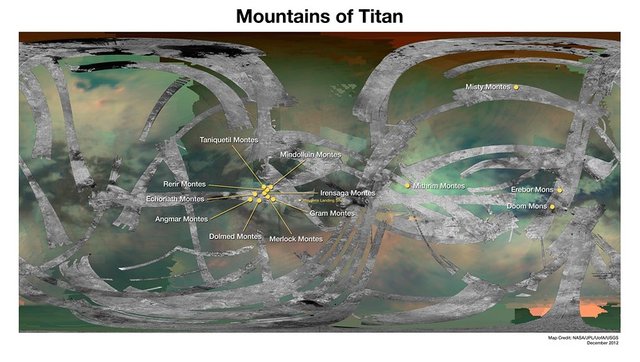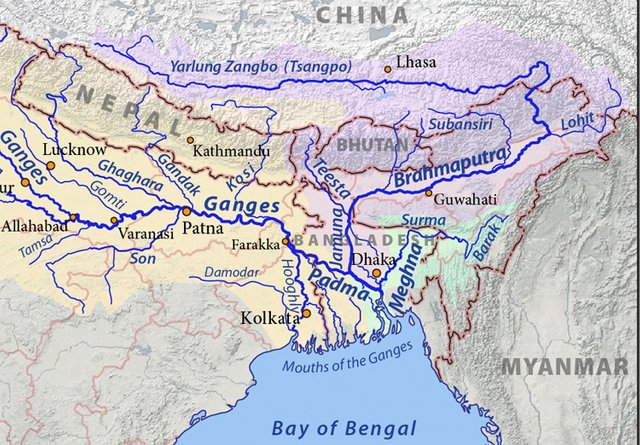The landscape of Titan resembles that of Mars, not Earth's
There are three bodies in the Solar System, whose landscapes are formed by liquids: Earth, Mars and Titan. While Earth is water world, Mars was wet in the past, hydrosphere of Titan consists of liquid hydrocarbons. Outside of Earth, Titan is the only body in the Solar System with flowing rivers, lakes and seas, which are fed by rains.
The team of researchers from MIT and Caltech have published in the Science magazine new study "Global drainage patterns and the origins of topographic relief on Earth, Mars and Titan".
In the article researchers report that Titan, like Mars but unlike Earth, has not undergone any active plate tectonics in its recent past. The upheaval of mountains by plate tectonics deflects the paths that rivers take. The team found that this telltale signature was missing from river networks on Mars and Titan.

Image: NASA/JPL - The map of Titan mountains, composed from data, obtained from Cassini's radar, during multiple flybys since 2004. Thick atmosphere does not allow to obtain images from optical telescopes. This map in full resolution
Lead author Benjamin Black said:
While the processes that created Titan's topography are still enigmatic, this rules out some of the mechanisms we're most familiar with on Earth
On Earth, landscapes are continuously reshaped by the process of plate tectonics: mountain ranges arise between colliding continental plates, so the rivers are forced to constantly adapt to changes, bypassing the growing mountains to reach the oceans.

Image: Wikimedia Commons - Interactions between rivers and mountains ranges on the borders of continental plates. Good study here
Martian landscapes, on the other hand, were shaped 2 - 4 billion years ago,during the period of heavy bombardment, when asteroids carved out large impact craters and pushed up heavy volcanoes. Impacts freed vast ice sediments, which melted instantly, creating tsunami waves up to 1 kilometer high, rolling on the surface.

Image: Nature.com - A 250-kilometre- long lobe of dark material might be the remnants of a tsunami that hit when Mars’ climate was cold enough to freeze the water into an ice-rich slush that crept across the landscape. Full study here
The topography of Titan is less known. What we know, is that surface of Titan is young, unlike Mars, but rather as Earth's. But there are absolutely no signs of the plate tectonics. Instead, the authors suggest Titan's topography may grow through processes like changes in the thickness of the moon's icy crust, due to tides from Saturn.
The team compiled a map of river systems for Earth, Mars and Titan. For the first two, high resolution is available, while Titan's maps are extremely fuzzy, with large unknown areas. To match the three, researchers scaled down the resolution on maps of Earth and Mars and then superimposed all three, to make direct comparisons between topographies. Then they marked every river that appeared to flow downhill. (Rivers always flow downhill, but on the map, some rivers might appear to flow uphill, because of low resolution, not allowing to see some slopes, which would divert flow)
The results show, that the number of rivers on Titan that appeared to flow downhill is more closely matched with Mars than with Earth. The compariosons of other parameters also show that Titan resembled Mars over Earth.
Black's co-author Taylor Perron, associate professor of geology in MIT said:
Any way of filling in the details of what Titan's surface is like, beyond what we can see directly in the images and topography, Cassini has collected, will be valuable for planning a return.
Well, while waiting for return , let's enjoy video of Huygens landing on the Titan's surface: